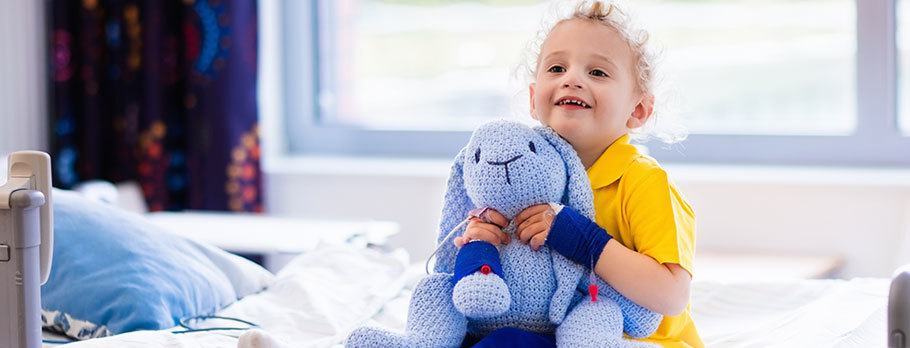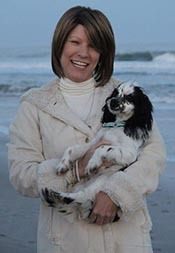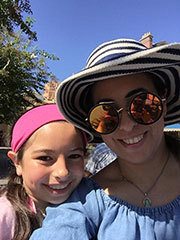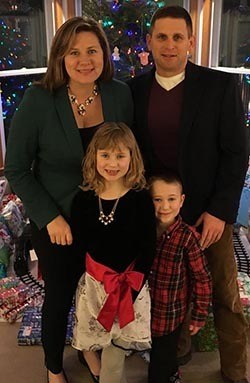
The Personal Impact of Rare Diseases

Sara Ashenfelter, associate director in business process operations, is a rare disease warrior working with PPD’s interactive response technology (IRT) group.
Rare diseases do not define me, but I hope sharing information about mine helps to raise awareness. A rare disease is one that affects fewer than 200,000.
My rare diseases are important to understand who I am and what Rare Disease Day means to me and my alphabet soup of diseases:
- Common variable immunodeficiency (CVID), which means my body doesn’t create immunoglobulin, those important antibodies that help fight infections
- Idiopathic thrombocytopenic purpura (ITP), which means I have unusually low levels of platelets, which helps blood clot
- Lymphocytic interstitial pneumonitis (LIP), an interstitial lung disease (ILD), which means I suffer from shortness of breath
- Otosclerosis, which has made hearing challenging for me

A mouthful of letters, but these rare diseases make it difficult for me to breathe freely, cause my energy to be unreliable and muscle weakness, and sicknesses are too easy to catch and difficult to shake.
There are no cures, but thankfully I am able to receive treatment from home. Other patients must go to a hospital or, worse yet, their insurance won’t cover their treatments.
Every month a nurse visits my home for about six hours for an intravenous infusion called IVIg. My nurse used to bring the expansive list of medications with her on infusion day, but now I have to arrange to be home several days in advance to receive the orders and make space to store them in my kitchen fridge.
I am grateful that PPD is blazing trails in rare disease research and helping to deliver therapies that could change my life, and the lives of thousands of rare disease patients.
Jenneen DeFiore, associate director in project management, is a member of the Rare Disease and Pediatric Center of Excellence and has a daughter with a rare disease.

Lilly was diagnosed with Charcot-Marie-Tooth (CMT), an inherited neurological disease, when she was just four. Muscles in the foot, lower leg, hand and forearm progressively degenerate. Lilly, who is now nine, also experiences the loss of feeling in the limbs, fingers and toes.
There are various forms of CMT disease and its severity can vary greatly. But in all cases, it can be extremely painful and limit the individual’s ability to do the everyday things the rest of us take for granted.
As Lilly’s mom, I want her to live the fullest life possible and be completely unlimited by her disease. Lilly is an ambassador for the Muscular Dystrophy Association (MDA). She raises money for MDA, attends MDA summer camp, gives speeches and counsels newly diagnosed kids. Lilly is an extremely driven, straight-A student with dreams of being a Broadway star. As a Girl Scout, she has sold more than 5,000 boxes of Girl Scout Cookies, and has been the top seller four years in a row. She takes lessons in ballet, tap dance, voice and cello. As her mom, I worry that her drive will have negative consequences on her disease — and her.
Clinical research in rare diseases is important to my family and me. We’re confident it could help shape her future and the lives of others with this disease. As a member of PPD’s Rare Disease and Pediatric Center of Excellence, I call upon my experiences from running rare disease trials for the past five years and from being a mom of a child with a rare disease. Viewing a rare disease on a personal level gives me deep insight on how trials should be designed and run — centered on the patient and caregiver.
Robin Pokrzywinski, research scientist, is a member of the Rare Disease and Pediatric Center of Excellence.
I work in PPD’s Patient-centered Research group with Evidera. I am passionate about rare disease research because you can’t meet these families and not be passionate.
A turning point was when I interviewed a family impacted by the worst disease you’ve never heard of. I was in the kitchen of their home in a suburban neighborhood — possibly the family next door. While some of the family’s children were not impacted by the rare genetic disease, one child was. I thought, this could be me. This could be my family and these could be my children. My life would have forever been different.
That’s the thing with rare diseases — they can blindside you, your family or anyone’s family. Eighty percent of rare diseases are genetic and 50 percent of rare diseases affect children. The family I interviewed had no warning. But they have had an abundance of hope for their child and family’s future. They advocate for their child and others impacted by rare disease. I want to advocate for them too.

I work with pharmaceutical and biotechnology companies to bring the patient’s voice into clinical research:
- What symptoms impact the person most?
- How do those symptoms disrupt their daily life?
- What unmet medical needs do these families face?
- How has the impact of rare disease influenced the whole family, not just the person with the condition?
In the Patient-centered Research group, we help companies include the patient’s perspective in their research in a holistic way. From a regulatory perspective, the U.S. government has shown a commitment to including the patient’s perspective in drug development as reflected in the 21st Century Cures Act. The U.S. Food and Drug Administration (FDA) has hosted a public workshop on rare diseases where many patient advocacy groups came to learn more about mobilizing membership to engage directly with the FDA.
I’m grateful to the families for being vulnerable and sharing their deeply personal experiences during our research interviews. I am cognizant that I have a responsibility for helping tell their story and to join in their advocacy through the work I do.
Watch our rare disease animation to learn more about our commitment to advancing rare disease research.